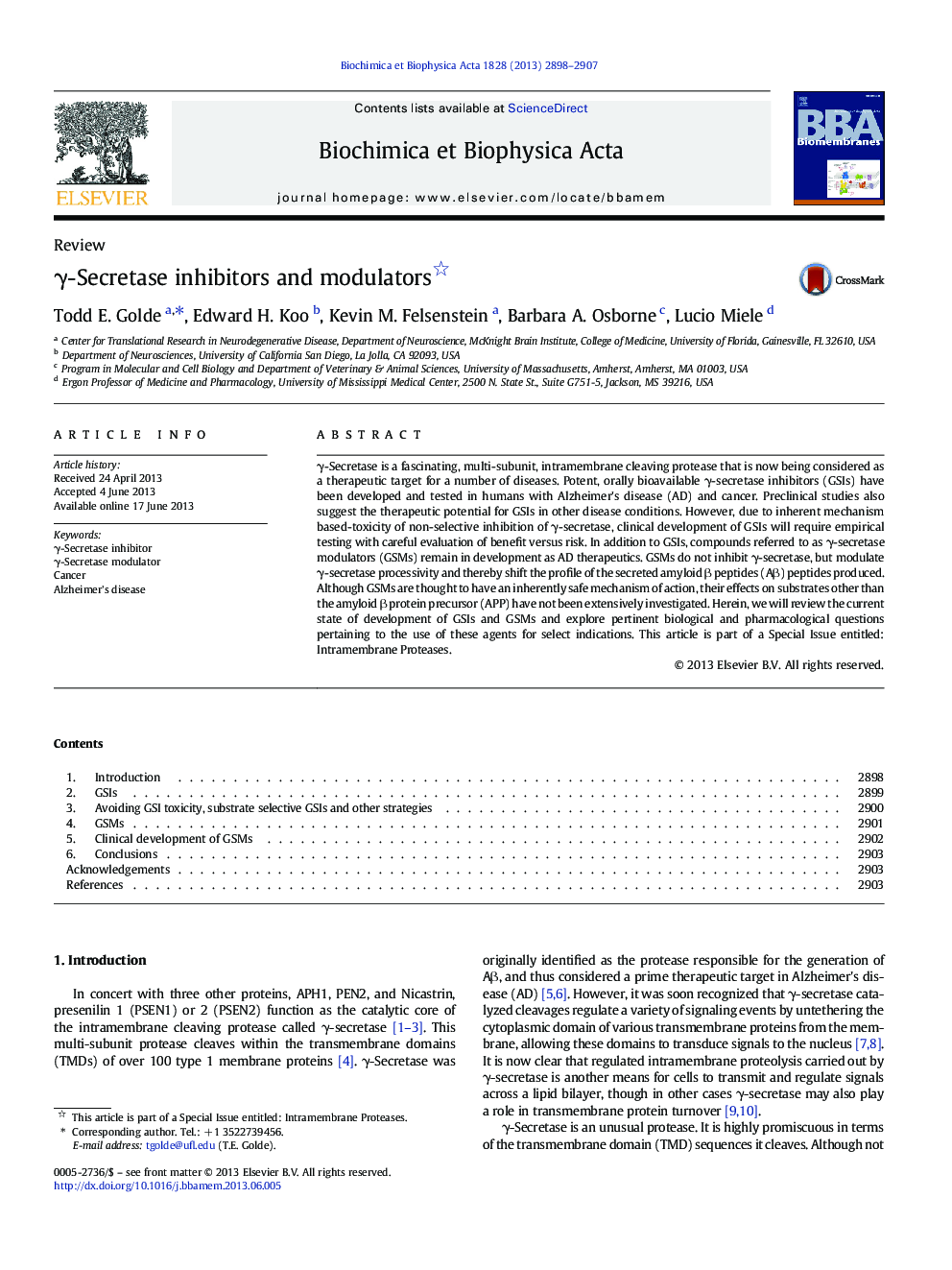| کد مقاله | کد نشریه | سال انتشار | مقاله انگلیسی | نسخه تمام متن |
|---|---|---|---|---|
| 1944250 | 1537141 | 2013 | 10 صفحه PDF | دانلود رایگان |

• γ-Secretase is a therapeutic target for a number of diseases.
• γ-Secretase is a highly tractable (druggable) therapeutic target.
• Unique properties of γ-secretase inhibitors and modulators may influence efficacy.
γ-Secretase is a fascinating, multi-subunit, intramembrane cleaving protease that is now being considered as a therapeutic target for a number of diseases. Potent, orally bioavailable γ-secretase inhibitors (GSIs) have been developed and tested in humans with Alzheimer's disease (AD) and cancer. Preclinical studies also suggest the therapeutic potential for GSIs in other disease conditions. However, due to inherent mechanism based-toxicity of non-selective inhibition of γ-secretase, clinical development of GSIs will require empirical testing with careful evaluation of benefit versus risk. In addition to GSIs, compounds referred to as γ-secretase modulators (GSMs) remain in development as AD therapeutics. GSMs do not inhibit γ-secretase, but modulate γ-secretase processivity and thereby shift the profile of the secreted amyloid β peptides (Aβ) peptides produced. Although GSMs are thought to have an inherently safe mechanism of action, their effects on substrates other than the amyloid β protein precursor (APP) have not been extensively investigated. Herein, we will review the current state of development of GSIs and GSMs and explore pertinent biological and pharmacological questions pertaining to the use of these agents for select indications. This article is part of a Special Issue entitled: Intramembrane Proteases.
Processing of a type 1 transmembrane protein (A), by a “sheddase” followed by sequential γ-secretase cleavages results in release of multiple potentially bioactive protein fragments: the ectodomain (B), a transmembrane carboxyl terminal fragment (CTF) or stub) (C), the cytoplasmic domain (D) and an Aβ/p3 like domain (E). Thus, γ-secretase generates potentially bioactive fragments (D) by an initial cleavage and (E) by processive step-wise cleavages. GSIs inhibit the initial cleavage and GSMs alter processivity.Figure optionsDownload high-quality image (101 K)Download as PowerPoint slide
Journal: Biochimica et Biophysica Acta (BBA) - Biomembranes - Volume 1828, Issue 12, December 2013, Pages 2898–2907